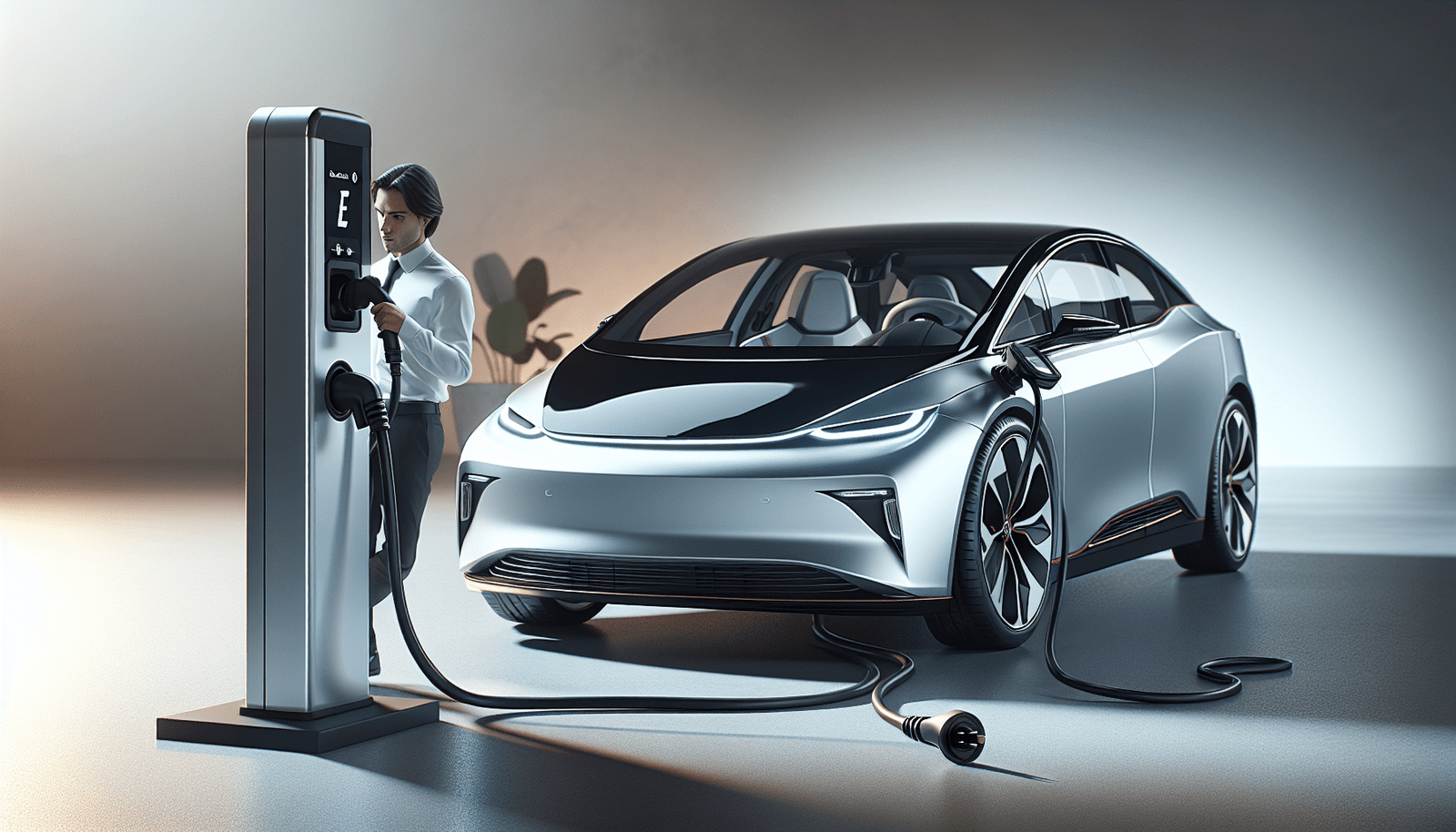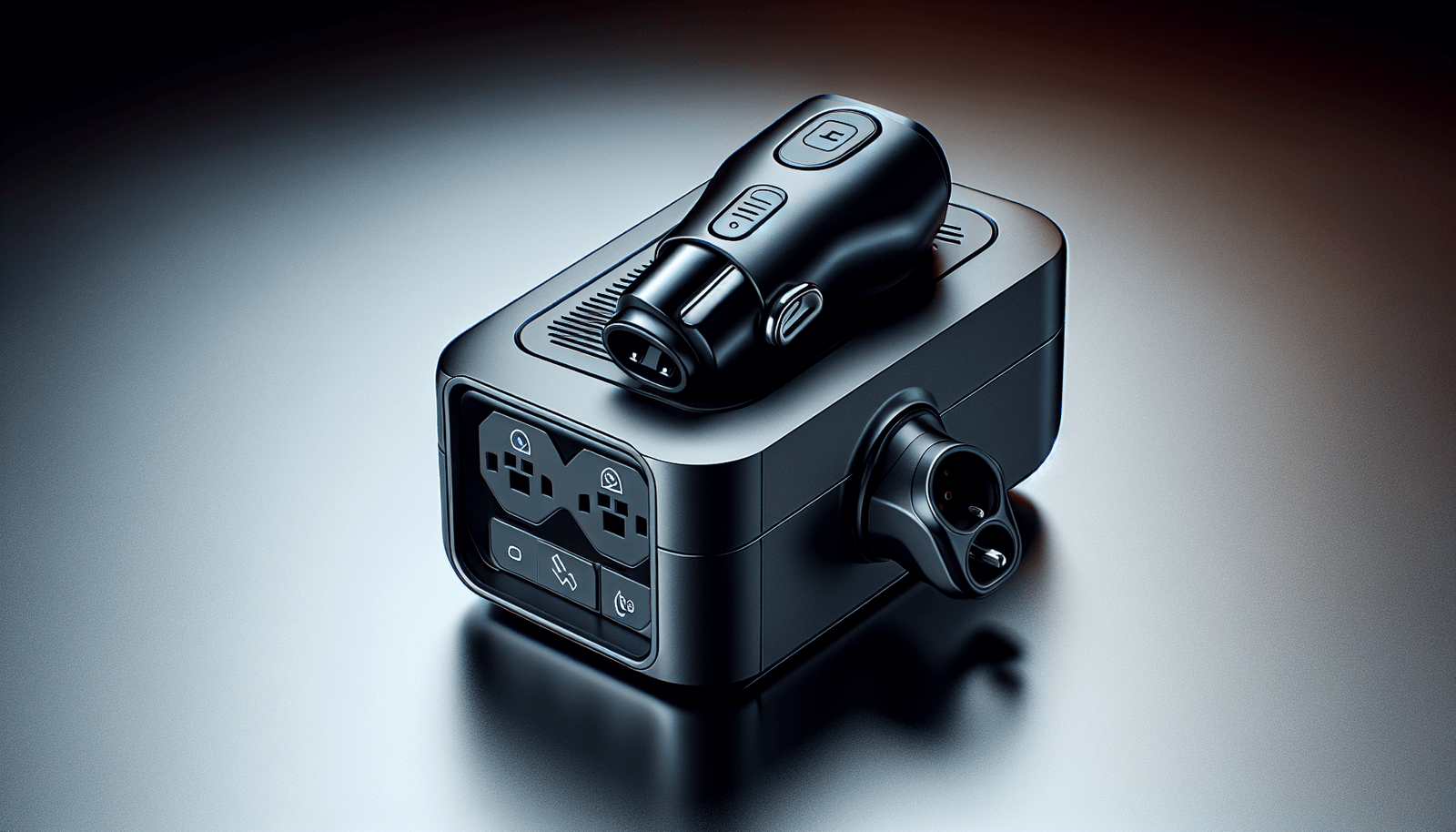Are you considering switching to an electric vehicle but feeling overwhelmed by the options for chargers? Don’t worry, we’ve got you covered. In this article, we will provide you with all the information you need to choose the best level 1 charger for your electric vehicle. Whether you’re a first-time electric vehicle owner or simply looking to upgrade your charger, we will break down the key factors to consider and provide some expert recommendations to help you make an informed decision. Get ready to charge up with ease and convenience!
Understanding Level 1 Chargers
Definition of Level 1 Chargers
Level 1 chargers are the basic and most commonly used chargers for electric vehicles (EVs). They are portable chargers that can be plugged into a standard household electrical outlet. These chargers typically provide a charging rate of 120 volts and 15 amps, which translates to a power output of 1.8 kilowatts, allowing for a slow and steady charging process.
How Level 1 Chargers Work
Level 1 chargers work by converting AC (alternating current) power from the electrical outlet into DC (direct current) power that can be stored in the EV’s battery. They do this through an onboard charger installed in the vehicle, which regulates the flow of electricity and ensures safe and efficient charging.
The charging process with a Level 1 charger is relatively slow compared to higher-level chargers, typically taking around 8 to 12 hours to fully charge a depleted EV battery. This makes them ideal for overnight charging or for scenarios where the vehicle is not frequently driven.
Benefits and Drawbacks of Level 1 Chargers
Level 1 chargers offer several benefits, especially for those who have access to a standard electrical outlet near their parking space. The main advantage is their affordability and simplicity. Level 1 chargers are relatively inexpensive compared to higher level chargers, and they do not require any additional installation or equipment.
Furthermore, Level 1 chargers are widely compatible with most EVs, as they use a standard charging connector known as a J1772 plug. This ensures compatibility across different vehicle brands and models, making Level 1 chargers a versatile charging option.
However, the slow charging speed of Level 1 chargers can also be seen as a drawback. If you require frequent or fast charging, a Level 1 charger may not be the most suitable option. Additionally, Level 1 chargers may not be practical for long-distance travel or for EV owners who have limited access to charging outlets.
Considerations Before Buying a Level 1 Charger
Assessing Your Charging Needs
Before purchasing a Level 1 charger, it is essential to evaluate your charging needs. Consider factors such as your daily driving habits, the range of your electric vehicle, and the availability of charging outlets. If you have a shorter commute or don’t drive your EV extensively, a Level 1 charger may be sufficient for your needs. However, if you require frequent long-distance travel or have a high daily mileage, you may want to consider a higher-level charger.
Compatibility with Your Vehicle
Ensure that the Level 1 charger you choose is compatible with your specific electric vehicle. Most EVs on the market today use the standard J1772 charging connector, but it is always recommended to verify compatibility with the manufacturer or consult the vehicle’s manual.
Availability of Charging Time
Consider the amount of time you have available for charging. Level 1 chargers typically require several hours to charge a depleted battery fully. If you have limited charging time due to your daily schedule or electricity rate plans that offer discounted rates during specific hours, you might want to explore faster charging options.
Planning for Future Vehicles
If you anticipate owning a different electric vehicle or adding another one to your household in the future, it is crucial to ensure the Level 1 charger you select is compatible with a variety of EV models. This will provide flexibility and avoid the need for additional chargers down the line.
Features to Look for in the Best Level 1 Charger
Charging Speed
While Level 1 chargers are known for their slower charging speed, it is still worth considering the amperage options available. Some Level 1 chargers offer adjustable amperage settings, allowing you to charge at a slightly faster rate if needed. However, keep in mind that increasing the amperage may require a dedicated electrical circuit and thus additional installation costs.
Cord Length
Evaluate the cord length of the Level 1 charger, considering the distance between your EV’s charging port and the nearest electrical outlet. Opting for a longer cord can provide more convenience and flexibility during the charging process.
Default Amperage
Ensure that the default amperage of the Level 1 charger matches the maximum charging capacity supported by your electric vehicle. Using a higher amperage than what your vehicle can handle may result in slower charging or potential damage to the electrical system.
Safety Features
Look for Level 1 chargers with built-in safety features such as overcurrent protection, ground fault circuit interrupters (GFCI), and auto shut-off capabilities. These features help prevent electrical hazards and protect your vehicle and home from potential damage.
Understanding Electrical Specifications
Voltage and Current Specifications
Level 1 chargers typically operate at 120 volts and 15 amps, providing a power output of 1.8 kilowatts. It is essential to have a clear understanding of the electrical specifications of your Level 1 charger to ensure compatibility with your electrical system and avoid overloading circuits.
NEMA Plugs and Outlets
NEMA (National Electrical Manufacturers Association) plugs and outlets are used to provide a standard connection between electrical devices and power sources. Level 1 chargers usually come with a NEMA 5-15 plug that fits into a standard household outlet. However, it is crucial to verify the specific NEMA plug configuration required for your Level 1 charger to ensure compatibility with your electrical outlets.
Choosing a Brand and Model
Brand Reputation
When selecting a Level 1 charger, it is advisable to choose a reputable brand that has a proven track record in the EV charging industry. Research different brands and consider customer reviews, warranties, and overall brand reputation. Reliable brands often offer better quality products, customer support, and longer-lasting chargers.
Model Reviews and Ratings
Before making a final decision, read reviews and ratings of specific Level 1 charger models. Look for feedback from other EV owners who have used the charger and consider factors such as ease of use, reliability, and overall customer satisfaction.
Warranty and Support
Check the warranty offered by the charger manufacturer. A longer warranty period indicates that the brand stands behind the quality of their product. It is also beneficial to look for companies that provide accessible customer support and maintenance services to address any potential issues that may arise.
Location and Installation Considerations
Charging at Home vs. Public Charging
Consider whether you primarily plan to charge your EV at home or if you frequently rely on public charging stations. If home charging is your primary method, a Level 1 charger would be more suitable. However, if you rely on public charging infrastructure for most of your charging needs, a Level 1 charger may serve as a backup option.
Indoor vs. Outdoor Installation
Determine whether you need to install the Level 1 charger indoors or outdoors. If you have a dedicated parking space indoors, you may want to consider a wall-mounted charger for convenience and space-saving purposes. For outdoor installations, ensure that the charger is weatherproof and can withstand various environmental conditions.
Required Permits and Regulations
Depending on your location, you may need to obtain permits or adhere to specific regulations for installing a Level 1 charger. Consult local authorities to ensure compliance with electrical codes and safety regulations. Additionally, consider hiring a licensed electrician to handle the installation process to ensure it is done safely and correctly.
Budgeting for a Level 1 Charger
Initial Purchase Price
Level 1 chargers are generally more affordable compared to higher-level chargers. However, prices can vary depending on the brand, specific model, and additional features. Set a budget range and compare different options within that range to find the best value for your money.
Installation Costs
The installation costs for a Level 1 charger are relatively low since they do not require specialized equipment or professional installation in most cases. However, if you need to install a dedicated circuit or require additional electrical work, there may be additional costs involved. Obtain quotes from electricians to understand the installation expenses better.
Ongoing Energy Costs
Factor in the long-term energy costs associated with using a Level 1 charger. While Level 1 chargers are energy-efficient compared to Level 2 or DC fast chargers, they still consume electricity during the charging process. Consider your electricity rates, charging frequency, and the impact on your monthly energy bills when budgeting for a Level 1 charger.
Evaluating Environmental Impact
Energy Efficiency of the Charger
Level 1 chargers, being slow chargers, tend to be more energy-efficient compared to higher-level chargers. However, the overall energy efficiency also depends on the charger’s internal components and design. Consider energy-efficient models that comply with energy standards and have lower standby power consumption.
Green Energy Options
If you are environmentally conscious, explore the availability of green energy options to power your Level 1 charger. Consider renewable energy sources such as solar panels or wind turbines to offset the carbon footprint associated with charging your EV.
Lifecycle of the EV Charger
Consider the overall lifecycle of the Level 1 charger, including its manufacturing process, materials used, and potential for recycling or disposal at the end of its life. Choosing a charger from a brand that prioritizes sustainability and incorporates eco-friendly practices can contribute to reducing the environmental impact associated with your charging setup.
Purchasing a Level 1 EV Charger
Where to Buy a Level 1 Charger
Level 1 chargers can be purchased from various sources, including online retailers, EV charging equipment manufacturers, specialty EV stores, and local hardware stores. Research different options, compare prices, and consider the reputation and credibility of the seller before making a purchase.
Comparing Prices
To ensure you get the best deal, compare prices of Level 1 chargers across different sellers. Take into account any additional features or warranty offerings when comparing prices to make an informed decision.
Reading Product Descriptions and Reviews
Before finalizing your purchase, thoroughly read the product descriptions provided by the seller or manufacturer. Pay attention to important specifications, such as charging speed, cord length, safety features, and compatibility with your electric vehicle. Additionally, read customer reviews to gauge the overall satisfaction and reliability of the Level 1 charger you are considering.
Using and Maintaining a Level 1 Charger
Operating Instructions
Familiarize yourself with the operating instructions provided by the charger manufacturer. Understand the different charging modes, indicator lights, and safety precautions. Following the manufacturer’s instructions will ensure safe and efficient charging.
Cleaning and Maintenance
Regularly clean the Level 1 charger to prevent dust and debris accumulation that could affect its performance. Use a soft cloth or brush to remove any dirt or residue from the charging cord and connector. Additionally, perform periodic maintenance checks to ensure all components are in good condition and that there are no signs of damage.
Troubleshooting and Repairs
In the event of any issues or malfunctions with the Level 1 charger, refer to the user manual for troubleshooting steps. If the problem persists or requires repairs, contact the manufacturer or a certified service center for assistance. Avoid attempting any repairs yourself, as it could void the warranty or potentially cause further damage.
In conclusion, choosing the best Level 1 charger for your electric vehicle involves assessing your charging needs, considering compatibility, evaluating features, understanding electrical specifications, selecting a reputable brand and model, considering location and installation requirements, budgeting for costs, evaluating environmental impact, making an informed purchase, and understanding how to use and maintain the charger properly. By following these guidelines and considering each aspect carefully, you can ensure a convenient and efficient charging experience for your electric vehicle.




